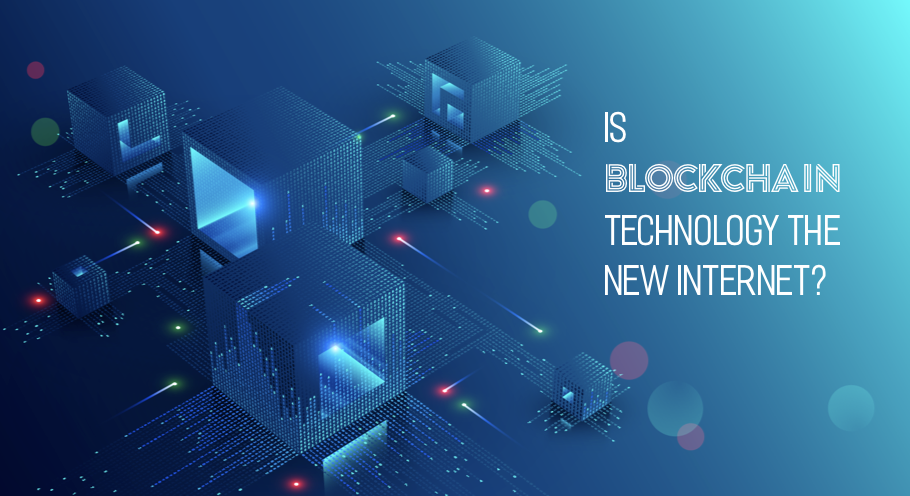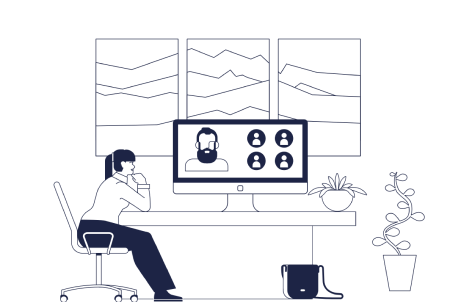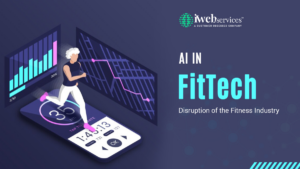By allowing the digital information to be distributed instead of getting it copied, blockchain technology has created the backbone of a new type of internet. Originally it was devised for the digital currency, Bitcoin, (Buy Bitcoin) the tech community is now searching for other potential uses for the technology.
Bitcoin is also called as “digital gold,” and for a good reason, Up till now, the total value of the currency is close to $112 billion USD.
What is Blockchain Technology?
“The blockchain is an incorruptible digital ledger for the economic transactions that can be programmed to record not only financial transactions but also virtually everything of value.”
Don & Alex Tapscott, authors Blockchain Revolution (2016)
A distributed database
Picture a spreadsheet that has been duplicated thousands of times across a network of computers. Then imagine this network is designed to regularly update this spreadsheet and you have a basic understanding of the blockchain.
Information held on a blockchain exists as a shared — and continually reconciled —set of the database. This is a way of using the network that which has its obvious benefits. The blockchain database isn’t stored in any one location, which means that the records it keeps are truly public and easily verifiable. There is no centralized version of the information present for a hacker to corrupt. It is Hosted by millions of computers and its data is accessible to everyone on the internet.
Blockchain as Google Docs

“The traditional way of sharing documents for a collaboration is to send a Microsoft Word document to another recipient and ask them to make revisions on it. The problem with this scenario is that you need to wait until receiving a return copy before you can see or make other changes as you are locked out for editing until the other person is done working on it. That’s the way how databases work today. Two owners can’t be work on the same record at once. That’s how banks maintain money balances and transfers; they briefly lock the access (or decrease the balance) while they make a transfer, update the same on another side, then re-open its access (or update again). With Google Docs (or Google Sheets), both parties can have access to the same document at the same time, and a single version of that document is always visible to both of them. Although it is like a shared ledger, it’s a shared document. The distributed part comes to existence when sharing involves a number of people.
Imagine if the number of legal documents that should be used this way. Instead of passing them to each other, losing track of its versions, and not being in sync with other versions, why can’t *all* business documents become shared instead of being transferred back and forth? We don’t need a blockchain to share documents, but shared documents analogy is a powerful one.
Blockchain Durability and robustness
Blockchain technology is like an internet that it has a built-in robustness , as it stores the blocks of information that are identical across the network.
The blockchain cannot:
- Be controlled by any single entity.
- Has no single point of failure.
Bitcoin was invented in 2008. Since then, the Bitcoin blockchain has operated without any significant disruption.
The internet itself has proven to be durable for almost 30 years now. It’s track record bodes well for blockchain technology as it will continue to evolve.
Transparent and incorruptible
The blockchain network lives in the state of consensus, one that automatically checks in with itself in every ten minutes. A kind of self-auditing ecosystem of a digital value, the network reconciles every transaction which occurs after every ten-minute intervals. Each group of these transactions is called as a “block”.
Data Transparency is embedded within the network as a whole.
It cannot be corrupted by altering any unit of information on the blockchain which would mean using a huge amount of computing power to override the entire network.
A network of nodes
The network of so-called computing “nodes” make up the blockchain.
Node is a computer connected to the blockchain network using a client that performs the crucial task of validating and relaying transactions and gets a copy of the blockchain, which automatically gets downloaded upon joining the blockchain network.
Together they create a second-level network, which has a different vision on how the internet can function.
Each node is an “administrator” of the blockchain and joins the network voluntarily (in this sense, the network is decentralized). However, each one has a huge incentive for participating in the network: the chance of winning Bitcoins.
Nodes are said to be “mining” Bitcoin but each of them is competing to win Bitcoins by solving computational puzzles. Bitcoin is now recognized as the first of many potential applications of the technology.
The idea of decentralization
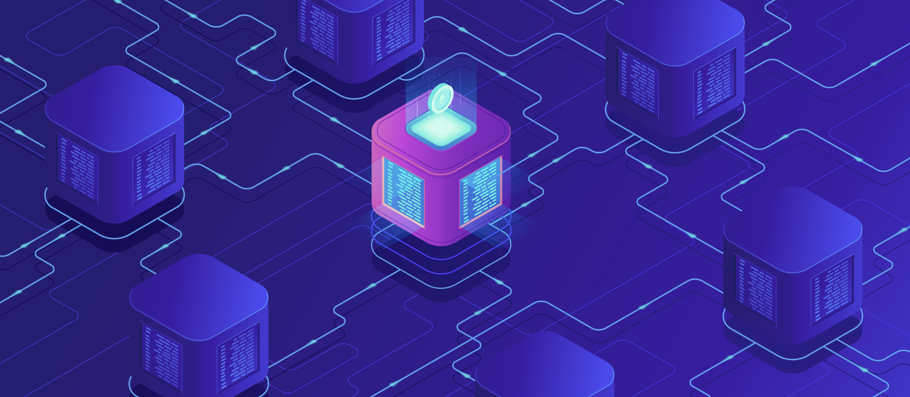
By its design, the blockchain is a decentralized technology.
Anything that happens on it is due to the function of the network as a whole. By creating a new way to verify transactions aspects, the traditional commerce might become unnecessary. Stock market trades become simultaneous on the blockchain, for instance — or it could make various types of record keeping, like a land registry, fully public as decentralization is already a reality.
The global network of computers uses blockchain technology to jointly manage the database of Bitcoin transactions. Thus, Bitcoin is managed by its network, and not any one central authority.The process of Decentralization means that the network operates on a user-to-user basis.
Who will use the blockchain?
Currently, the finance domain offers the strongest use cases for this technology. International remittances, for instance, World Bank estimates that over $430 billion money transfers were sent in 2015.
The blockchain potentially removes the middleman from these types of transactions. Personal computing became more accessible to the general public with the invention of the Graphical User Interface (GUI), which took the form of a “desktop”. Similarly, the most common GUI devised for the blockchain are these so-called “wallet” applications, which people mostly use to buy things with Bitcoin, and store it along with other variants of cryptocurrencies.
Transactions online are closely connected with the processes of identity verification. It is easy to imagine that wallet apps will transform in the coming years by including other types of identity management.
The Blockchain & Enhanced security
As all the data is stored across its network, the blockchain eliminates the risks that come when we store the data centrally.
Its network lacks centralized points of vulnerability which computer hackers can exploit. Today’s internet has various security problems that are familiar to everyone. We all depend upon the “username/password” system to protect our identity and assets online. Blockchain security methods are based on encryption technology.
The basis of encryption technology is the so-called public and private “keys”. The “public key” is a long, randomly-generated string of numbers which is a user’s address on the blockchain. Bitcoins sent across the network gets recorded as belonging to its address. The “private key” is like a password that gives its owner the access to their Bitcoin or any other digital assets. Store your data on the blockchain which is incorruptible. In order to protect your digital assets you have take care of your private key.
A second-level network
The Internet now has a new layer of functionality with blockchain technology.
Already users can transact directly with each other — Bitcoin transactions in 2017 averaged around $2 billion per day. With the added security brought by the blockchain, the internet business is on track to unbundle the traditional institutions of finance.
Goldman Sachs which is one of the world’s largest financial giant believes that the blockchain technology holds a great potential especially to optimize clearing and settlements and could be responsible for global savings of up to $6bn per year.
Is the Blockchain a New Web 3.0?
The blockchain gives the users of the internet the ability to create value and authenticate the digital information. Following are the business applications of Blockchain :
Smart contracts
Distributed ledgers enable the coding of simple contracts which will only execute when specified conditions are met. Ethereum is an open source blockchain project that was built specifically to implement this possibility. Still, it is in its early stages but it has the potential to leverage the usefulness of blockchains on a world-changing scale.
At the current level of development of technology, smart contracts can be programmed to perform simple functions. For instance, a derivative could be paid out whenever the financial instrument meets a certain benchmark, with the use of blockchain technology and Bitcoin the payout can be enabled automatically.
The sharing economy
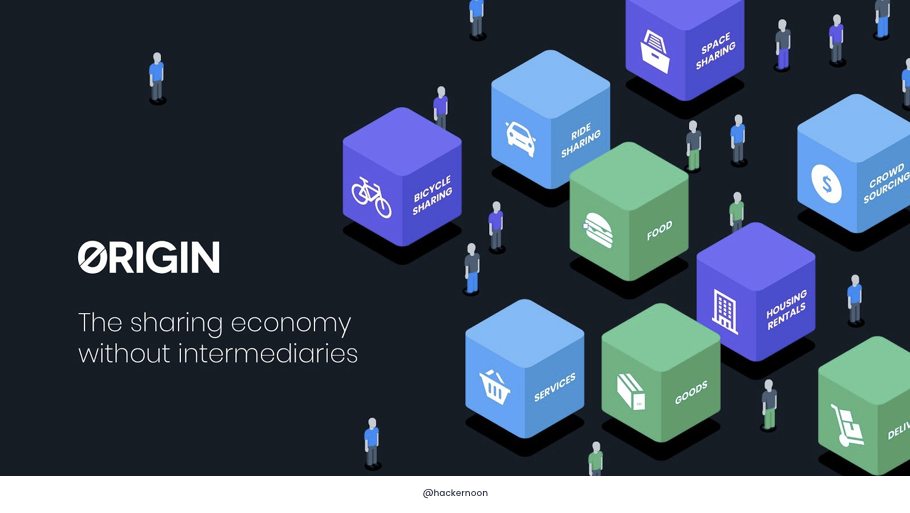
As companies like Uber and Airbnb are flourishing, the sharing economy has already become a proven success. However, users who want to hail a ride-sharing service rely on an intermediary like Uber. By enabling peer-to-peer payments, the blockchain opens the door for a direct interaction between parties — a truly decentralized sharing economy results.
An early example, OpenBazaar uses the concept of blockchain to create a peer-to-peer eBay. You can download the app on your computing device, start transacting with OpenBazzar vendors without paying any transaction fees. The “no rules” ethos of the protocol means that your personal reputation will be more important to business interactions.
Crowdfunding
Crowdfunding portals like Kickstarter and Gofundme are doing the advance work for the emerging peer-to-peer economy. The popularity of these sites suggests that the people want to have a direct say in the product development. Blockchains take this interest to the next level, potentially by creating crowd-sourced venture capital funds.
In 2016, one such experiment was the Ethereum-based DAO (Decentralized Autonomous Organization), raised $200 million USD in just over two months. Participants purchased “DAO tokens” which allowed them to vote on smart contract venture capital investments (voting power was proportionate to the number of DAO they had). A subsequent hack of project funds proved that the project was launched without any proper due diligence, with had the disastrous consequences. Regardless, the DAO experiment suggests that the blockchain has a potential to usher in “a new paradigm of economic cooperation.”
Governance
By making the results fully publicly accessible and transparent, distributed database technology can bring full transparency to elections or any other kind of poll taking. Ethereum-based smart contracts will allow us to automate the process.
Boardroom app enables organizational decision-making to happen on the blockchain. In practice, this means company governance can now become fully transparent and verifiable whether they are managing digital assets, equity or information.
Supply chain auditing
Consumers want to know the truth about the ethical claims which companies make about their products, whether they are real or not? Distributed ledgers provide an easy way to certify that the backstories of the things that we buy are genuine. Transparency comes with the blockchain as there is timestamping of a date and location — on ethical diamonds, for instance — that can correspond to a product number.
The UK-based Provenance offers supply chain auditing for a huge range of consumer goods. Making the best use of the Ethereum blockchain, a Provenance pilot project ensures that fish sold in most of the Sushi restaurants in Japan has been sustainably harvested by its suppliers in Indonesia.
File storage
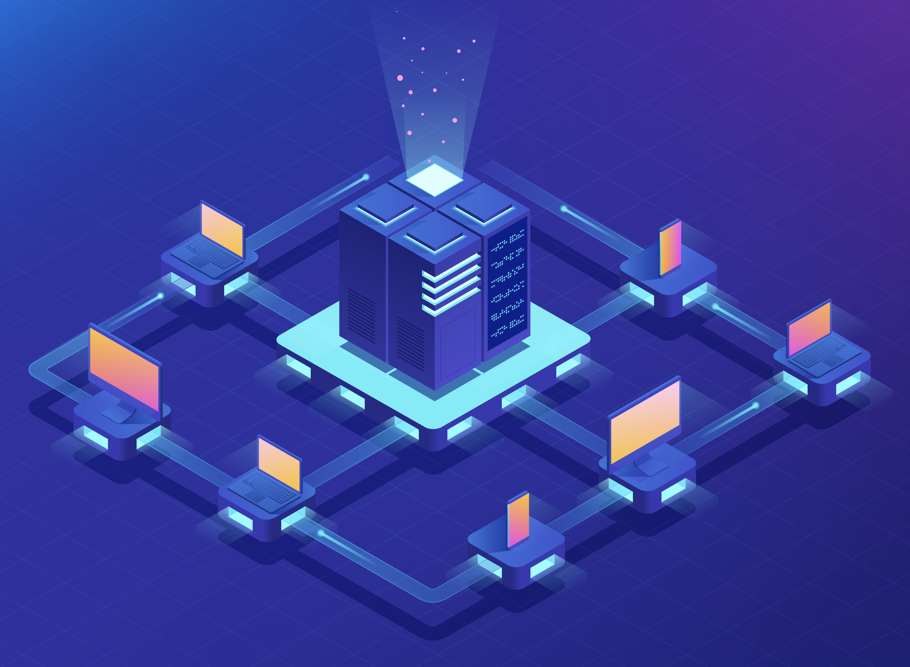
Decentralizing file storage on the internet brings comes with its benefits. As the data is Distributed throughout the network it protects files from getting hacked or lost.
Inter-Planetary File System (IPFS) makes it simple to conceptualize how a distributed web might operate. It is very similar to the way a BitTorrent moves data over the internet, IPFS makes sure that we do not need any centralized client-server relationships. An internet is made up of completely decentralized websites which have the potential to accelerate the file transfer and streaming times. Such an improvement is not only convenient but also It’s a necessary upgrade for the current overloaded content-delivery systems.
Prediction markets
The crowdsourcing of predictions for an event probability is proven to have a high degree of accuracy. Averaging the opinions cancels out an unexamined bias that may distort judgment. Prediction markets make the payout according to event outcomes which are already active. Blockchains are the “wisdom of the crowd” technology that without any doubt will find other applications in the years to come.
The prediction market application Augur makes the share offerings on the basis of the outcome of real-world events. Participants have a chance to earn money by buying into the correct prediction. More shares purchased in the correct outcome, the higher will be the payout. Even with a small commitment of funds (less than a dollar), anyone can ask any question, which will create a market based on a predicted outcome, and can collect half of all transaction fees the market generates
Protection of intellectual property
As it is well known that digital information can be produced infinitely — and can be distributed widely thanks to the internet. This has given web users a goldmine of free content. The Copyright holders have not been so lucky, losing control over their intellectual property and suffering financially as a consequence. Smart contracts can protect the copyright and can automate the sale of creative works online by eliminating the risk of file copying and redistribution.
Mycelia uses the blockchain process to create a peer-to-peer music distribution system. It was founded by the UK singer-songwriter Imogen Heap, Mycelia enables the musicians to sell their songs directly to audiences, as well as license samples to producers and share the royalties amongst the songwriters and musicians — all of these functions were automated by smart contracts.
Internet of Things (IoT)
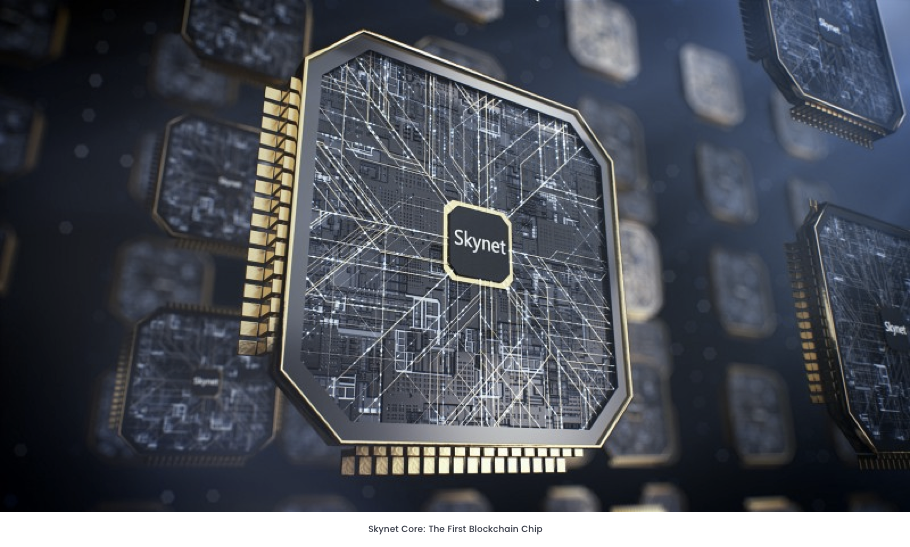
What is the meaning of IoT?
It is the network-controlled management of certain types of electronic devices — for instance, monitoring of the air temperature in a storage facility.The remote systems management can be automated by the Smart contracts. A combination of software, sensors, and the network facilitates the exchange of data between objects and mechanisms. The result of this whole process is the increase in system efficiency which significantly improves the cost of monitoring.
All of the biggest players in manufacturing, tech, and telecommunications are vouching for IoT dominance. Samsung, IBM, and AT&T their natural extension of existing infrastructure are controlled by incumbents, IoT applications will run the gamut from the predictive maintenance of mechanical parts to data analytics, and hence they will mass-scale the automated systems management.
Neighbourhood Microgrids
Blockchain technology also enables the buying and selling of renewable energy generated by neighborhood microgrids. Whenever the solar panels make excess energy, Ethereum-based smart contracts start its automated redistribution.
Consensys is one of the foremost company located in Brooklyn, It is globally developing a range of applications for Ethereum. One project that they are partnering is Transactive Grid, in which they are working with the distributed energy outfit, LO3. A prototype project which is currently up and running which uses Ethereum smart contracts to automate the monitoring and redistribution of microgrid energy. This is called as “intelligent grid” and it is an early example of IoT functionality.
Identity management
There is a definite need for a better process of identity management on the web. The ability to verify your identity is the lynchpin of financial transactions which happens online. However, remedies for such security risks that come with web commerce are imperfect at best. Distributed ledgers offer an enhanced method for proving who you are, along with it comes the possibility to digitize your personal documents. Having a secure identity will also be crucial for online interactions — for instance, in the case of sharing economy. Having a good reputation is one of the most important conditions for doing transactions online.
Creating the digital identity standards is a highly complex process. Keeping the technical challenges aside, universal online identity solution requires a lot of cooperation between private and government entities. As there is need to navigate legal systems in different countries and hence the problem becomes exponentially difficult. E-Commerce on the internet currently relies only on the SSL certificate (the little green lock) for secure transactions over the web.
You will find this article useful: How to Create a Fitness App
AML and KYC
Anti-money laundering (AML) and know your customer (KYC) are the practices which have a strong potential for being adapted into the blockchain. Currently, financial institutions are performing a labor-intensive multi-step process for every new customer. KYC costs could be reduced through cross-institution based client verification, and at the same time, it will also increase monitoring and effectiveness.
Polycoin is a startup which has an AML/KYC solution that involves analyzing transactions. Those transactions which are identified as being suspicious are then forwarded to the compliance officers. Another startup Tradle is also developing an application named Trust in Motion (TiM) and it is characterized as an “Instagram for KYC”, TiM allows customers to take a snapshot of their key documents (passport, utility bill, etc.). Once the documents will be verified by the bank, then the data will be cryptographically stored on the blockchain.
Data management
Today, people use social media platforms like Facebook and exchange their personal data. In the future, users will have the ability to manage and sell their data which is generated by their online activities, As it can be easily distributed into the small fractional amounts, Bitcoin will most likely be the currency which will be used for such type of transaction.
Land title registration
Blockchains can make all kinds of record-keeping more efficient including the Publicly-accessible ledgers. Property titles tend to be susceptible to fraud, which is not only costly but also needs intensive labor to administer.
Stock trading
There is huge potential for making the share settlement process more efficient in stock trading using the blockchains. The trade confirmations will become almost instantaneous (as opposed to taking three days for clearance) if it is executed peer-to-peer. Potentially, it will result in removal of the intermediaries like; clearing house, auditors and custodians from the process.
Numerous stock and commodities exchanges like ASX (Australian Securities Exchange), the Deutsche Börse (Frankfurt’s stock exchange) and the JPX (Japan Exchange Group) are in the process of prototyping the blockchain applications for their services. Nasdaq’s Linq is a platform for private market trading (typically between pre-IPO startups and investors). In 2015, Linq announced their first share trade completion. Recently, Nasdaq announced the development of their trial blockchain project for proxy voting on the Estonian Stock Market.
 October 8, 2018
October 8, 2018
